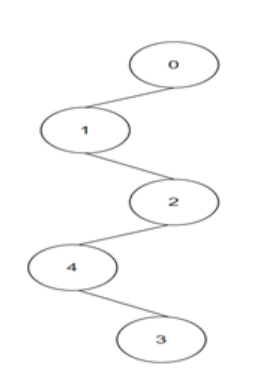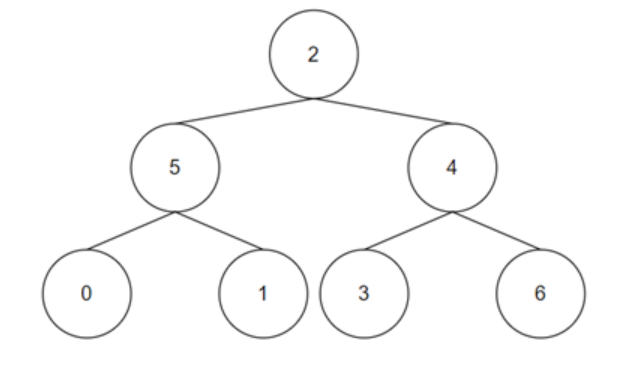How to Nail your next Technical Interview











You may be missing out on a 66.5% salary hike*













Binary Tree Level Order Traversal is an algorithm that processes all nodes in a tree by traversing through depth, starting with the root, then the child of the root, and so on. Let’s take a look at some of the examples to print the level order traversal line by line of the binary tree.
Given a binary tree, the task is to return the level order traversal of its nodes' values, i.e., list the node values level by level from left to right.


Constraints:
We have provided three solutions. We will be using depth-first search & breadth-first search, respectively, extracting the values of the nodes in the required order. In the last solution, we will solve the problem with a nice memory optimization trick.
Throughout the editorial, we will assume that there is node_count number of nodes in the binary tree.
Learn how to Construct the Binary Tree with the inorder and preorder traversal.
We will be maintaining a two-dimensional list to keep track of the nodes at every level.
Our approach will be:
O(node_count): There will be O(node_count) number of recursive calls on the call stack in the worst case.
O(node_count)
Space used for input: O(node_count)
Auxiliary space used: O(node_count)
Space used for output: O(node_count)
So, total space complexity: O(node_count)
Know how to check if a binary tree is a Symmetric Tree or not.
Know how to Validate a Binary Search Tree.
We will be maintaining a two-dimensional list to keep track of the nodes at every level in this solution too.
Our approach will be:
For storing the levels of each node: O(node_count)
For the queue: O(node_count)
So, total auxiliary space complexity: O(node_count)
Space used for input: O(node_count)
Auxiliary space used: O(node_count)
Space used for output: O(node_count)
So, total space complexity: O(node_count)
Find out how to Build a Balanced BST from a Sorted Array.
In order to reduce memory consumption, we can follow the below steps:
For storing all the nodes from a level: O(node_count)
For the queue: O(node_count)
So, total auxiliary space complexity: O(node_count)
Space used for input: O(node_count)
Auxiliary space used: O(node_count)
Space used for output: O(node_count)
So, total space complexity: O(node_count)
Learn how to find the Maximum Depth of a Binary Tree.
We hope that these solutions to the Binary Tree Level Order Traversal problem will help you level up your coding skills. Companies such as Amazon, D. E. Shaw & Co., Microsoft, Cisco, Samsung, Qualcomm, Morgan Stanley, etc., include Binary Tree Level Order Traversal interview questions in their tech interviews.
If you are preparing for a tech interview at FAANG or any other Tier-1 tech company, register for Interview Kickstart’s FREE Webinar to understand the best way to prepare.
Interview Kickstart offers interview preparation courses taught by FAANG+ tech leads and seasoned hiring managers. Our programs include a comprehensive curriculum, unmatched teaching methods, FAANG+ instructors, and career coaching to help you nail your next tech interview.
We offer 17 interview preparation courses, each tailored to a specific engineering domain or role, including the most in-demand and highest-paying domains and roles, such as:
To learn more, register for the FREE Webinar.
Binary Tree Level Order Traversal is an algorithm that processes all nodes in a tree by traversing through depth, starting with the root, then the child of the root, and so on. Let’s take a look at some of the examples to print the level order traversal line by line of the binary tree.
Given a binary tree, the task is to return the level order traversal of its nodes' values, i.e., list the node values level by level from left to right.


Constraints:
We have provided three solutions. We will be using depth-first search & breadth-first search, respectively, extracting the values of the nodes in the required order. In the last solution, we will solve the problem with a nice memory optimization trick.
Throughout the editorial, we will assume that there is node_count number of nodes in the binary tree.
Learn how to Construct the Binary Tree with the inorder and preorder traversal.
We will be maintaining a two-dimensional list to keep track of the nodes at every level.
Our approach will be:
O(node_count): There will be O(node_count) number of recursive calls on the call stack in the worst case.
O(node_count)
Space used for input: O(node_count)
Auxiliary space used: O(node_count)
Space used for output: O(node_count)
So, total space complexity: O(node_count)
Know how to check if a binary tree is a Symmetric Tree or not.
Know how to Validate a Binary Search Tree.
We will be maintaining a two-dimensional list to keep track of the nodes at every level in this solution too.
Our approach will be:
For storing the levels of each node: O(node_count)
For the queue: O(node_count)
So, total auxiliary space complexity: O(node_count)
Space used for input: O(node_count)
Auxiliary space used: O(node_count)
Space used for output: O(node_count)
So, total space complexity: O(node_count)
Find out how to Build a Balanced BST from a Sorted Array.
In order to reduce memory consumption, we can follow the below steps:
For storing all the nodes from a level: O(node_count)
For the queue: O(node_count)
So, total auxiliary space complexity: O(node_count)
Space used for input: O(node_count)
Auxiliary space used: O(node_count)
Space used for output: O(node_count)
So, total space complexity: O(node_count)
Learn how to find the Maximum Depth of a Binary Tree.
We hope that these solutions to the Binary Tree Level Order Traversal problem will help you level up your coding skills. Companies such as Amazon, D. E. Shaw & Co., Microsoft, Cisco, Samsung, Qualcomm, Morgan Stanley, etc., include Binary Tree Level Order Traversal interview questions in their tech interviews.
If you are preparing for a tech interview at FAANG or any other Tier-1 tech company, register for Interview Kickstart’s FREE Webinar to understand the best way to prepare.
Interview Kickstart offers interview preparation courses taught by FAANG+ tech leads and seasoned hiring managers. Our programs include a comprehensive curriculum, unmatched teaching methods, FAANG+ instructors, and career coaching to help you nail your next tech interview.
We offer 17 interview preparation courses, each tailored to a specific engineering domain or role, including the most in-demand and highest-paying domains and roles, such as:
To learn more, register for the FREE Webinar.
Attend our free webinar to amp up your career and get the salary you deserve.
.png)




